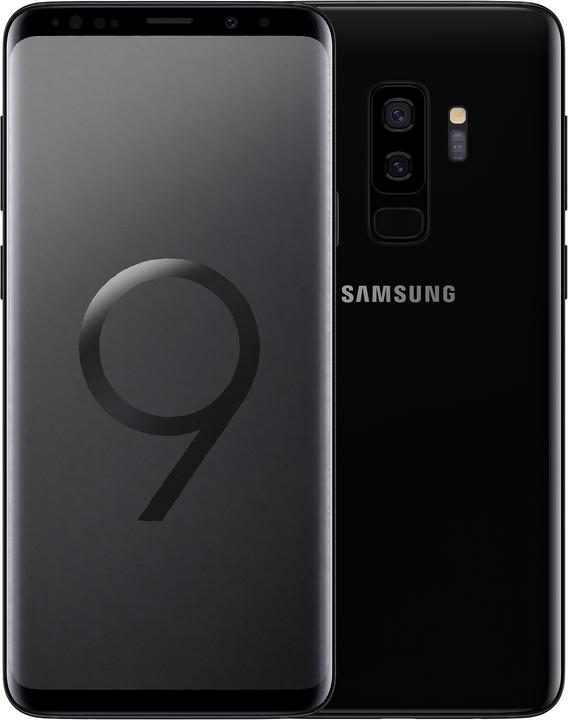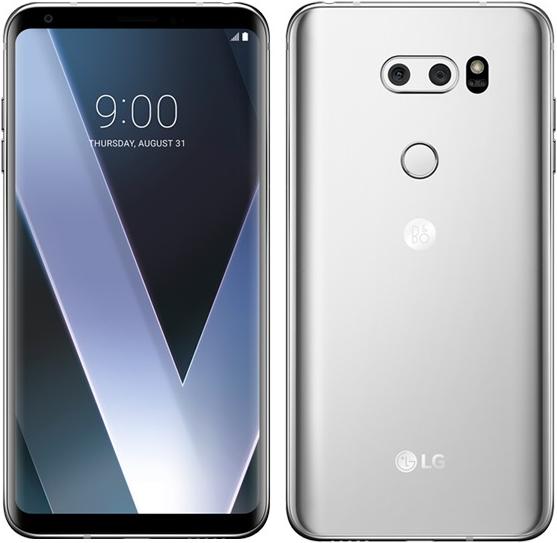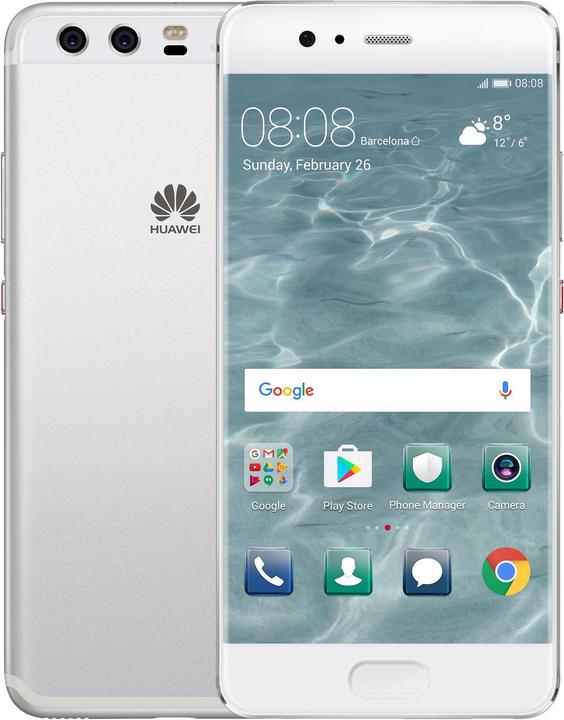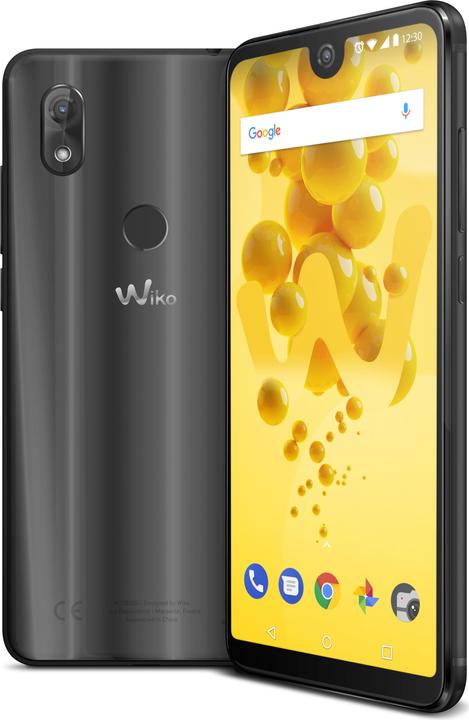

The great camera comparison: which phone stands out from the crowd?
When it comes to smartphone cameras, the adverts are always promising and always show beautiful images. But what is the reality? Two editors carried out a test on 18 smartphones.
Located on the back of the phone, cameras have gone from being a gimmick to a genuine selling point. Samsung's slogan for the S9 series is "The Camera. Reimagined". Huawei, meanwhile, is launching the first triple camera and a huge image sensor.
Which camera really takes the best photos? It's true that the photos in phone advertising campaigns are superb. But you know as well as I do that they're nothing like the ones you take with your camera.
Which camera really takes the best pictures?

Source: Apple.com

Source: James Yu/Huawei.com
Who can we believe? Or rather, should we close our eyes, as it were, and cross our fingers that all goes well?

Not necessarily. Livia Gamper, Junior Editor, and I travelled to Bern with a laptop bag containing the season's leading smartphones and those of interest to us. We took the same photo with each of them.
The rules of the test
The test should reflect everyday life as much as possible. In other words: full throttle on auto mode. On the other hand, no pro mode, no settings, no filters. As we wanted this comparability to be as reliable as possible, we took along a tripod with shoulderpod. In addition, the software on each phone had been upgraded.
A compromise technique: to ensure that the shot was more or less identical from one photo to the next, we - wherever possible - used the rule of thirds function. We also made use of the included camera app, with the aim of the test being to see what the phone had up its sleeve.
The results were then ranked according to the phone's price. Below you'll find download links to photos that can be sorted by brand and age as well as simply by age.
The photos you see on this page have been reduced to 1920 pixels wide: they are even smaller in our web layout. The full-resolution originals can be found under the download links below.
The fountain
At the Rose Garden in Bern, we looked for a subject with a foreground and background. As the roses hadn't yet bloomed, we opted for the fountain.

We have used the rule of thirds function, where appropriate, based on this line of force.

Apple iPhone X


Samsung Note 8

Samsung Galaxy S9 Plus

Huawei P20 Pro

Google Pixel 2

Essential PH-1

Huawei Mate 10 Pro

Samsung Galaxy S8 Plus

LG V30

Huawei P20

HTC U11

Huawei P10 Plus

Xiaomi Mi Mix 2

Meizu Pro 7

Huawei P9

Wiko View 2 Pro

Wiko View 2
Update 17.04.2018: the phone's software is a pre-release version. While everything else works perfectly and very quickly, the colour calibration on the camera doesn't seem to be final yet.

HTC One M7
Okay, we admit, this phone has no business being in this test, it serves our curiosity more. The HTC One M7 dates back to 2013. What did the pictures look like five years ago?

The panoramic
Still at the Rose Garden, we stand facing the city. Quite a view, isn't it?

We use the rule of thirds feature, whenever possible, taking this line of force to frame.

Apple iPhone X

Samsung Note 8

Samsung Galaxy S9 Plus

Huawei P20 Pro

Google Pixel 2

Essential PH-1

Huawei Mate 10 Pro

Samsung Galaxy S8 Plus

LG V30

Huawei P20

HTC U11

Huawei P10 Plus

Xiaomi Mi Mix 2

Meizu Pro 7

Huawei P9

Wiko View 2 Pro

Wiko View 2
Update 17.04.2018: the phone's software is a pre-release version. While everything else works perfectly and very quickly, the colour calibration on the camera doesn't seem to be final yet.

HTC One M7

Downloads
Here you'll find download links that allow you to sort the images as you see fit. Here you can view the photos in full resolution and see the differences more easily.
The fountain
- The Fountain, ranked by phone age
- The Fountain, ranking by price
- reference date: 11 April 2018
- The fountain, ranking by brand and age
The panoramic
- The Panorama, ranked by phone age
- Panning, ranking by price
- reference date: 11 April 2018
- Panoramic, ranking by brand and age
Dominik's opinion
The HTC One M7 of 2013, I remember well, was considered a phone with a good camera. At the time, we had no idea. It's true that on a mobile phone screen, the photo looks good. But let's dare a comparison on a big screen!


Just because it's the most expensive on the list, does that mean the iPhone X has the best camera? Let's compare images from two top-of-the-range cameras with similar weather with clouds occasionally obscuring the sun during the shot. To do this, let's move from the fountain to the panorama, also on a fairly overcast day. Let's take a closer look at the trees and sky.


On the Google Pixel 2, the sky comes out much better than on the Huawei P20 Pro. But the P20 catches the light better. With the larger cameras, on the other hand, it has to be said that there are no stored photos that have not been read and optimised by the software. This can be seen at the pixel level with raised black values, and with the P20 Pro, by looking closely at the details of trees.

The only camera, where we can say with certainty that software is not involved, is the Sony a7s ii. The a7s ii obviously has it, but it doesn't add a filter to the photo once it's been taken to modify it. That's why we're comparing them here.

The P20 Pro seems to apply a blur effect to everything, supposedly to avoid pixelated edges in the distance and small impurities. On the phone's screen, it also works wonderfully well, but as you zoom in, it gets worse.


In comparison, the iPhone X offers similar performance, but with much lower resolution. The iPhone shoots at 2048x1536 pixels and 72dpi, the P20 Pro at 3648x2736 pixels and 96dpi.
The comparison between the P20 Pro and its little brother, the P20, is interesting too. The difference? The P20 Pro has a triple camera, which is supposed to take even better photos.


The tree above the chimney stands out. Here, the P20 Pro fares a little better. But I think for a really meaningful comparison with the two phones, we'd have to run the test with multiple images.
As soon as you get over the 500 franc mark, there's nothing to complain about in terms of the photos taken. Cheaper phones take functional photos that show only the bare essentials. They don't really shine for their aesthetics. But that's not what we expect here.

The interesting thing is that only a few phones, in automatic mode, use HDR (wide gamut imaging) on their own for the subjects we chose. Colours are exacerbated, black and white levels, adjusted to avoid aberrations. That's how to intensify the luminosity of a photo. Only the LG V30 stands out from the crowd, using HDR more readily than other phones. What's interesting is that sometimes manufacturers boast about the HDR capabilities of their phones when the phones struggle to trigger HDR.
.
And as for the Wiko View 2, we don't know.
Livia's review
When it comes to taking beautiful photos, colourimetry and contrast make all the difference, in my eyes. And for good reason, to recover a photo that's too pale or too saturated will require a lot of editing.
All the photos we took had different colourimetry. Sometimes, the sun was shining brighter and the light was more intense; as a result, you can't judge the colour from one photo to the next in the same way.
That's why I decided to take a few photos of the same colour.
This is why I will limit my assessment to the panoramic, as the weather was more or less overcast throughout the shots.
I am using the section of a macadam driveway as a reference, which is generally grey in colour. The differences in grey make it possible to clearly distinguish the variation in colour.
The colourimetry of the Google Pixel 2 is one of the best in our photo tests. Compared to the colours in the Samsung Galaxy S9 Plus photo, it looks brighter and more vibrant. On my PC screen, it takes on a yellow hue.


That said, colourimetry varies a lot from screen to screen. If you look at photos on your PC screen, you might think differently. When you take a look at images on a mobile screen, it's different again.
The iPhone X catches my eye because the colours in the photo are brighter. Compared to the Huawei P20 Pro, the alley grey is much brighter. I like the colourimetry of the P20 Pro because it looks natural. On the P20 Pro, the grey really stands out. Some people do find Huawei's photos saturated.


Aside from colourimetry, a couple of phones don't pass our test. Particularly when it comes to camera usage. The Xiaomi Mi Mix 2, for example, activates a watermark on the first photo. Worse still, to deactivate this function, you have to go into the bowels of the settings. Rather unbearable.
On some phones - like the two Wikos, and even more surprisingly the iPhone X - it's impossible to activate the grid. Regular smartphone photographers may not need it after all. But we would have loved to have it.
The colours of the Wiko View 2 pull towards green. And that's in both photos. I'm sure you've noticed. I'd like to talk about it, because it's unacceptable. Yet the phone is not broken, the Exif data in the photos is correct and does not indicate the reasons for this green.

The Wiko's poor results in this test surprised me the most. It's true that this phone only costs a fifth of the price of the best phones on our panel. For the price of an iPhone, you could buy 6.4 Wiko View 2. But what's the point of taking greenish photos? I also tested the phone myself for a few days. Admittedly, the photos weren't top quality, but they did the trick. Especially the selfies, they weren't too bad.

It would appear that the phone's software has gone completely wrong in calculating these two photos.
Update 17.04.2018: the phone's software is a pre-release version. Although everything else works perfectly and very quickly, the colour calibration on the camera doesn't seem to be final yet.
The photos I prefer are those taken by the Huawei-signed cameras - which we had available - and those of the Meizu Pro 7. So why Huawei? Because I like its colourimetry in general. I like all the photos. The first one, of the Mate 10 Pro, is a little dark in comparison, but in its defence when we took it, there was no natural light. I like the Meizu Pro 7 phone in its own right, and for the price, I think the photos are successful.
In our range of cheap phones, the Meizu Pro 7 stands out in a big way. At the moment, we no longer have the Meizu Pro 7 in shop.
Now...
Now it's your turn to tell us more. This is the first test of its kind, and we find it conclusive. What aspects would you be interested in? Portraits, perhaps?
Updated 17.04.2018 // 18:15
Email received from Wiko explaining why the green appears in the photos: the phone used for our test is from a pre-sampling. In other words, the hardware is final, but the software may still contain bugs. Apart from the camera, we didn't encounter any in our normal day-to-day use. This green tint should disappear on production versions.
Journalist. Author. Hacker. A storyteller searching for boundaries, secrets and taboos – putting the world to paper. Not because I can but because I can’t not.
















